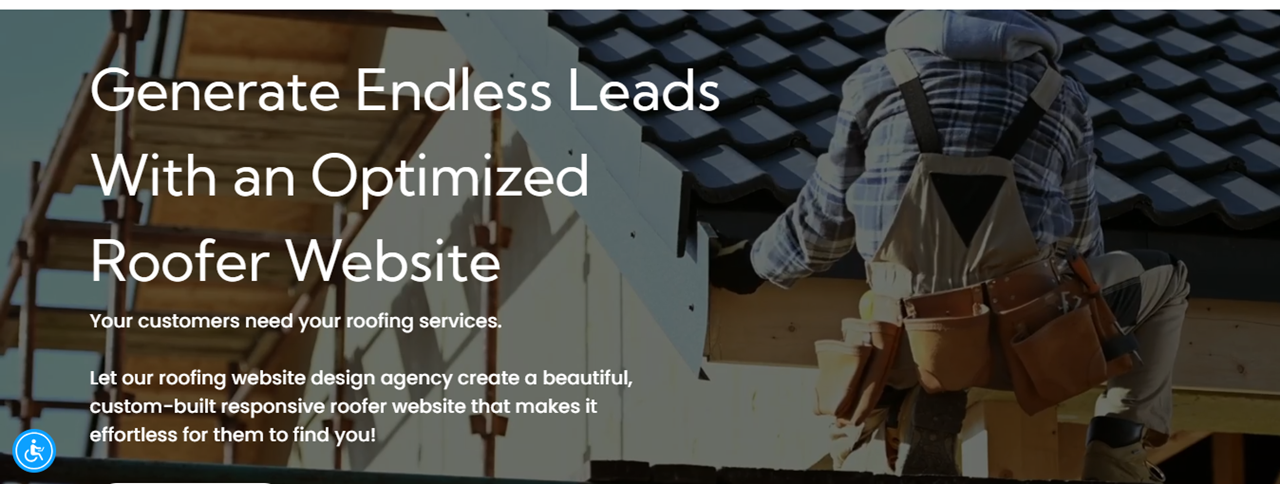In today’s digital age, having a well-designed website is crucial for any business, including roofing companies. Your website serves as the first point of contact for potential customers, making it essential to make a strong and lasting impression. In this article, we will explore the best practices for designing the perfect roofing website that not only captures attention but also converts visitors into loyal clients.
Understanding the Importance of Website Design
Before delving into the best practices, it’s essential to recognize the significance of website design for your roofing business. Your website is a reflection of your brand, professionalism, and credibility. Here are some reasons why the best roofing website design is essential:
1. First Impressions Count
Your website is often the first interaction potential clients have with your roofing company. A professionally designed site can leave a positive first impression and instill confidence in your services.
2. Showcasing Expertise
An effective roofing website allows you to showcase your expertise in the industry. It should include detailed information about your services, certifications, and past projects, establishing you as a trustworthy and knowledgeable contractor.
3. Online Visibility
A search engine-friendly website can improve your online visibility. Proper SEO optimization ensures that your site ranks well in search engine results, making it easier for potential clients to find you when they search for roofing services.
4. Lead Generation
Your website can serve as a powerful lead generation tool. It should provide visitors with easy ways to contact you, request quotes, or schedule inspections. An effective website can convert casual visitors into paying clients.
5. Competitive Edge
In a competitive roofing market, having a professional website can set you apart from the competition. A well-designed site demonstrates that you are a modern and reliable roofing contractor.
Now, let’s explore the best practices for designing the perfect roofing website:
1. Simplicity and Clarity
A cluttered and confusing website can drive visitors away. Keep your design clean, simple, and easy to navigate. Use clear headings, concise text, and a logical menu structure to guide visitors through your site. Avoid overcrowding your pages with excessive information or distracting elements.
2. Mobile Responsiveness
With the increasing use of smartphones and tablets, it’s crucial to ensure that your roofing website is mobile-friendly. A responsive design adapts seamlessly to different screen sizes, providing a positive user experience on all devices. Mobile optimization also plays a role in search engine rankings.
3. High-Quality Visuals
High-quality images and videos are essential for showcasing your roofing projects. Invest in professional photography to capture your work accurately. Use visuals that demonstrate the quality of your craftsmanship, and don’t forget to include before-and-after photos to showcase your skills.
4. Clear Call-to-Action (CTA)
Every page on your website should have a clear and compelling call-to-action (CTA). Whether it’s a “Request a Quote” button, a “Contact Us” form, or a “Schedule an Inspection” option, make it easy for visitors to take the next step. Place CTAs prominently throughout your site to encourage engagement.
5. Contact Information
Your contact information should be readily accessible. Include your phone number, email address, and physical address (if applicable) on every page, typically in the website header or footer. Providing multiple ways to reach you ensures that potential clients can contact you in their preferred manner.
6. Testimonials and Reviews
Customer testimonials and reviews add credibility to your roofing business. Showcase positive feedback from satisfied clients on your website. Include client photos and quotes to make the testimonials more relatable and trustworthy. You can also link to third-party review platforms like Google My Business for additional transparency.
7. About Us Page
Your “About Us” page is an opportunity to tell your company’s story, share your values, and establish a personal connection with potential clients. Include information about your team, your mission, and your commitment to quality roofing services. Use this page to build trust and showcase your company culture.
8. Services and Pricing
Clearly outline the roofing services you offer and provide information about pricing if possible. Transparency about your services and pricing can help potential clients make informed decisions. Be honest about any potential additional costs, warranties, and the duration of your projects.
9. Blog and Educational Content
A blog section on your website allows you to share valuable insights, industry updates, and helpful tips with homeowners. Providing educational content demonstrates your expertise and positions you as an authority in the roofing field. Regularly updating your blog can also improve your search engine rankings.
10. Contact Form and Live Chat
In addition to your contact information, consider including a contact form on your website. Make it easy for visitors to send you inquiries or requests for quotes. Some websites also offer live chat support, which can provide immediate assistance and improve user engagement.
11. Social Media Integration
Integrate your social media profiles into your website to connect with potential clients on multiple platforms. Display social media icons that link to your profiles, and consider embedding a live social media feed on your site. This integration helps build your online presence and fosters community engagement.
12. Security and Trust Badges
To reassure visitors about the security of their information, consider displaying trust badges or security certifications on your website. This can include SSL certificates, industry affiliations, or awards your roofing company has received.
13. Fast Loading Times
A slow-loading website can frustrate visitors and lead to high bounce rates. Optimize your website for fast loading times by compressing images, using efficient coding, and choosing a reliable hosting provider. A speedy website enhances user experience and can positively impact your search engine rankings.
Conclusion
Designing the perfect roofing website requires careful planning and attention to detail. Your website is an essential tool for attracting and converting potential clients, so investing in a professional and user-friendly design is crucial. By following these best practices, you can create a roofing website that not only showcases your expertise but also helps your business thrive in the competitive roofing industry. Remember that your website is an ongoing project, and regular updates and improvements will keep it effective and relevant in the long term.

